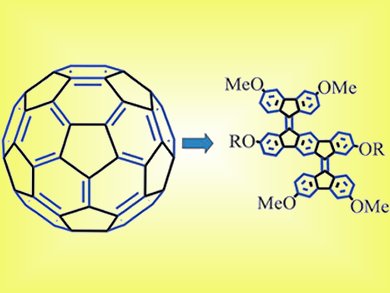Spherical fullerenes, affectionately known as ‘buckyballs’, are unique structures composed entirely of carbon. Their interesting chemistry has made them the subject of intense research, especially in materials science, electronics, and nanotechnology.
Fulvio Brunetti and co-workers, University of California, USA, have synthesized and characterized new ‘deconvoluted’ fullerene derivatives that preserve a section of the fullerene motif. The alternate five- and six-membered rings in the backbone of the molecule resemble a fullerene that is twist-flattened in dihedral planes (see scheme).
The derivatives offered some interesting improvements over fullerenes: they absorbed more visible light and covered a wider range of the solar spectrum. Photoluminescence quenching experiments showed a similarly improved electron-accepting behavior with respect to fullerenes.
Currently, these materials are being investigated for use as acceptors in bulk heterojunction solar cells.
- “Deconvoluted Fullerene” Derivatives: Synthesis and Characterization
F. G. Brunetti, A. Varotto, N. A. Batara, F. Wudl,
Chem. Eur. J. 2011.
DOI: 10.1002/chem.201100442



